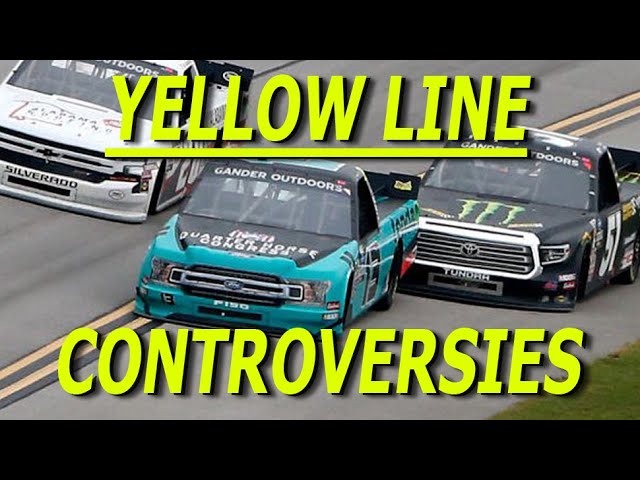
In an effort to produce entertaining races week after week, NASCAR, like any sporting body, has implemented various rules at various points. The stock car racing league’s rule book has developed all through the years because of safety concerns and mechanical progressions in the game, making on target activity significantly unique contrasted with past ages. However, some of the rules didn’t go as planned, and others caused disagreement among stakeholders. There were also a few rules that drivers disagreed with but fans supported. Thus, changes in the rule book are quite often going to occur in the years to come.
The double yellow line rule, one of the most contentious in the sport’s history, is the first rule on the list. The yellow line rule, which has been in effect since 2001, states that vehicles must race above the double yellow lines that run the length of the race track. NASCAR will decide how to punish drivers who break the rule. The fact that decisions are made at the race officials’ discretion, with some calls being questioned, is the source of the disagreement over this rule. One model would be Denny Hamlin’s success at the 2020 YellaWood 500 at Talladega where the Joe Gibbs Racing veteran went from P5 to the race lead on the last lap subsequent to passing the yellow line to stay away from an accident. Not every race on the calendar implements the rule, though. It only concerns Superspeedway tracks such as Daytona and Talladega.
Drivers who make only light contact are frequently penalized by race officials in other motorsports series like Formula One. However, drivers in NASCAR appear to avoid being penalized for bumping their rivals. Drivers like 7-time champion Dale Earnhardt Sr. are famous for knocking others to progress in the field – with the NASCAR legend in any event, acquiring the epithet “The Intimidator” for his forceful driving style. Although the stock racing league prohibits bumping to intentionally crash an opponent, the ruling appears to be ambiguous. To such an extent that Austin Dillon took out Joey Logano and Denny Hamlin at the 2024 Cook Out 400 from Richmond Raceway for the race win. Dillon said that he didn’t like the move after Richmond’s victory, but “I had to do it.” Bumping, according to some, will always be a part of the sport’s DNA, which means it will continue to be controversial for a long time.
Simply put, regardless of their standings in the regular season, drivers can earn a playoff spot if they win one race. This means that if a driver wins one of the 26 races during the regular season, they can still compete in the 10-race playoff schedule, even if they are far below the playoff cutoff. Harrison Burton is the most recent race victor to procure a spot in the postseason notwithstanding sitting in the 34th spot in the standard season standings. Burton, who won’t have a seat next year, won the 2024 Coke Zero Sugar 400 at Daytona in the No. 21 Ford Mustang, giving Wood Brother Racing its 100th NASCAR Cup Series victory.
Restrictor Plate
In 1988, NASCAR presented the restrictor plate, which decreases motor power by as much as north of 200 pulls. The aim was to make dashing more secure by dialing back the racecars at Superspeedways. The cars were packed closer together with a restrictor plate, resulting in more side-by-side racing. This implied dashing occurrences like a disaster area would just make it more perilous for the drivers. As a result, drivers did not like the plate, with some arguing that going slower does not mean being safer. However, due to the close racing it brought, fans seemed to adore it. The last time this safety feature was used was in the 2019 Daytona 500. Instead, tapered spacers were used for better throttle response.
NASCAR presented stage racing in 2017, which is separated by stage alerts. Each race has three phases, with the third and last one being the longest stage. Stage dashing guidelines assemble the pack under alert in anticipation of the following stage. Some contend that stage alerts ruin systems as vehicles play out a restart after each stage, disturbing the progression of a race. It additionally gives long in the middle of between the stages, permitting NASCAR to give more advertisements – which a few fans see as gimmicky.
Leave a Reply